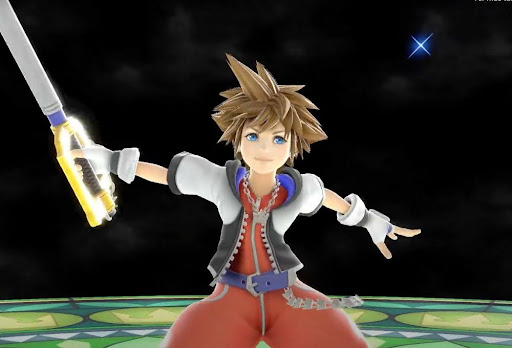
Smash Your Way to Victory: Best Combo Strategies for Super Smash Bros Ultimate
Combos are the lifeblood of competitive play in Super Smash Bros Ultimate. They take one good opening and turn it into real momentum. Whether you’re playing friendlies or preparing for a tournament, knowing how to start, extend, and finish a combo is what separates casual players from top contenders.
But combos are not just about pressing buttons quickly. They require timing, precision, and understanding of how each character’s tools interact with your opponent’s position, percent, and defensive options.
This guide will break down essential combo strategies for popular characters, teach you how to improve execution under pressure, and help you turn lab work into tournament performance. You can test these combos live at Play at HyperX Arena and get real feedback from the competitive scene.
Why Combos Matter in Competitive Smash
Landing that first hit is just the beginning. What comes next often decides who controls the stock. In Super Smash Bros Ultimate, the ability to consistently convert small openings into big damage is a core part of competitive play.
Combos allow you to:
- Maximize punish opportunities
- Push your opponent to the ledge or offstage
- Build mental pressure as your opponent scrambles to escape
- Set up for tech chases, resets, or kill confirms
At the highest level, small differences in damage or control often decide the winner. A missed combo can cost you a stock or let your opponent regain center stage. That is why top players don’t just land hits—they plan the follow-up before the first move connects.
Want to commit your combos to muscle memory? Join training sessions listed on the Game Calendar and get consistent practice in focused setups.
Key Elements of a Strong Combo
To build a strong combo strategy, you need to understand what makes a combo reliable and effective. Good combos are not always flashy—they are consistent, adaptable, and lead to advantage.
Combo Starters
These are your reliable openers. They can be grabs, tilts, aerials, or jab resets. You want a starter that works at low and mid-percents and leads into guaranteed follow-ups.
Execution Techniques
Great combos rely on movement. Practice short hops, fast falls, buffered inputs, and pivot grabs. Execution makes the difference between landing the combo or dropping it mid-string.
Finishing Hits
Know when to go for kill confirms or when to reset neutral. Sometimes ending a combo with stage control is more valuable than raw damage.
Stage Awareness
Platforms and blast zones change your combo options. A move that kills off the side on Battlefield may not work the same on Town and City. Learn how your routes change depending on stage selection.
Need a high-quality space to drill execution and matchup-specific combos? Use the Streamer Room to record, review, and improve without distractions.
Best Combos by Character
Here are combo strategies for some of the most popular and competitive characters in Super Smash Bros Ultimate. These are proven routes that show up in tournament play and offer a strong foundation to build your own variations.
Mario
Mario’s up-tilt and down-throw combos are bread-and-butter tools for mid-level and pro players alike.
- Basic combo: Down-throw → up-tilt → up-air → up-air → up-B
- Timing tip: Delay your fast fall slightly to follow DI
- Competitive use: Builds early percent quickly, leading to edgeguard situations
Joker
Joker’s drag-down combos are flexible and effective both on stage and near the ledge.
- Basic combo: Down-throw → forward air → drag-down up-air → grab → back-throw
- Timing tip: Practice input buffering to follow up after drag-down
- Competitive use: Great for resets, especially with Arsene active
Pyra/Mythra
Use Mythra for combo starters and switch to Pyra to finish stocks.
- Basic combo: Mythra’s neutral air → up-tilt → up-air → switch → Pyra down-air → up-smash
- Timing tip: Use fast fall for consistent follow-up windows
- Competitive use: Mythra’s speed sets up Pyra’s kill power
R.O.B.
R.O.B. uses gyro setups to start unique combo routes.
- Basic combo: Gyro toss → down-tilt → up-smash or side-B
- Timing tip: Practice gyro angles and tech chase reaction
- Competitive use: Great ledge trapping and corner pressure
Pikachu
Pikachu’s nair loops are high-reward but require tight execution.
- Basic combo: Neutral air (nair) drag down → grab → up-throw → thunder
- Timing tip: Practice nair hitboxes on different characters
- Competitive use: Excellent at racking up damage and leading into kills
Lucina
Lucina is consistent and strong at tech-chase combo extensions.
- Basic combo: Forward air → dash attack → tech-chase forward smash
- Timing tip: Read tech direction and delay slightly for max punish
- Competitive use: Good at maintaining control and pressure on landing
Watch these characters live at Gaming Events in Las Vegas and learn how the best players adjust combos on the fly in different situations.
Timing and Adaptability
Even the best combos fail if your timing is off. Combos are not static—they depend on your opponent’s DI, percent, fall speed, and stage position. The key is to be flexible and aware.
React to DI
DI (Directional Influence) affects where your opponent flies after a hit. Reacting to DI mid-combo lets you adjust spacing and follow up with the correct move.
Know Your Percent Windows
Combos do not work forever. At higher percentages, your opponent may fly too far or fall too fast. Learn the percent ranges for each setup and adjust your plan when needed.
Adjust on the Fly
Sometimes your combo starter lands in a weird spot or your opponent mashes a defensive option. Be ready to end early, switch to a tech chase, or go for stage control instead.
For deep combo practice, record and review sets in the Streamer Room, where you can slow down replays and catch small timing errors.
Practicing Combos Under Pressure
You might hit your best combos in training, but can you do it with a crowd watching or when your last stock is on the line? That is the difference between training and performance.
Simulate Tournament Conditions
Use sparring partners, not CPUs, to test combos in a match setting. Set a timer, keep track of the percent, and focus on landing your combos in real match flow.
Warm Up With Drills
Before bracket matches, spend 10 to 15 minutes drilling your basic combos. This sharpens muscle memory and boosts confidence.
Don’t Autopilot
Many players fall into the trap of always using the same combo route. Train yourself to identify percent, spacing, and options to pick the best follow-up each time.
You can join open brackets, casual setups, or weekly sessions through the Game Calendar to practice execution under real pressure.
Train Live and Level Up Your Combo Game
Knowing your combos is only the first step. To win consistently in Super Smash Bros Ultimate, you need to execute them under pressure, on any stage, against any matchup. Precision, practice, and performance are all part of the equation.
Start with the basics. Practice with intention. Watch how tournament players land their confirms, and then build your game plan around consistency and control.
Want to test your combo strategies in live match settings? Play at HyperX Arena, challenge real players, and refine your timing under real-world conditions. For one-on-one training, streaming sessions, or tournament prep, Contact HyperX or Rent Your Streamer Room and turn your lab time into tournament wins.

